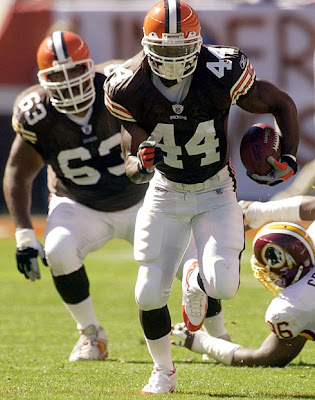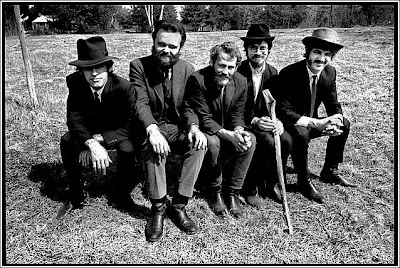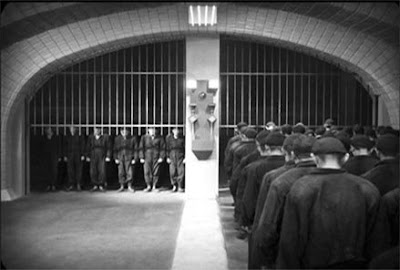Browns  Browns Archive
Browns Archive  As It Stands Again - Running Backs
As It Stands Again - Running Backs
 Browns Archive
Browns Archive  As It Stands Again - Running Backs
As It Stands Again - Running Backs
Written by
Dave Kolonich
 The following is Part Five in a series profiling the most essential positions that will determine success for the Browns in 2009. After beginning the series by looking at the team's traditional weaknesses at linebacker and along the defensive line, Dave Kolonich profiled the team's drama drenched shortcomings at wide receiver before focusing on the intriguing situation developing along the offensive line. Today he takes a look at the players who may most benefit from the improved O-line depth, as our spotlight turns to the Browns' current collection of running backs.
The following is Part Five in a series profiling the most essential positions that will determine success for the Browns in 2009. After beginning the series by looking at the team's traditional weaknesses at linebacker and along the defensive line, I profiled the team's drama drenched shortcomings at wide receiver before focusing on the intriguing situation developing along the offensive line. Today I take a look at the players who may most benefit from the improved O-line depth, as our spotlight turns to the Browns' current collection of running backs.
The following is Part Five in a series profiling the most essential positions that will determine success for the Browns in 2009. After beginning the series by looking at the team's traditional weaknesses at linebacker and along the defensive line, Dave Kolonich profiled the team's drama drenched shortcomings at wide receiver before focusing on the intriguing situation developing along the offensive line. Today he takes a look at the players who may most benefit from the improved O-line depth, as our spotlight turns to the Browns' current collection of running backs.
The following is Part Five in a series profiling the most essential positions that will determine success for the Browns in 2009. After beginning the series by looking at the team's traditional weaknesses at linebacker and along the defensive line, I profiled the team's drama drenched shortcomings at wide receiver before focusing on the intriguing situation developing along the offensive line. Today I take a look at the players who may most benefit from the improved O-line depth, as our spotlight turns to the Browns' current collection of running backs.
---
Running back is certainly the most star-crossed of any position on the Browns roster since the team's return in 1999. The talent that has assumed a contributing role at the position over the past several years has almost become a symbol of the team itself. For example, the highs of 2007 seemed to coincide with the revival of Jamal Lewis' career in Cleveland. Lewis' physical, and often dynamic late-game running success seemed to reflect the Browns' ascension to the brink of the playoffs.
However, the insertion of players such as Karim Abdul-Jabbar, James Jackson, Lee Suggs, William Green, Ben Gay, Reuben Droughns and Jerome Harrison have more correctly paralled the team's recent offensive success. The presence of all these names suggest that a) the Browns' running attack is annually one of the league's worst, and b) Call it The Ghost of Jim Brown, but Browns fans will passionately support any running back who shows a glimmer of potential...

Except for Jamal Lewis.
And there is one simple reason why Browns fans can never fully embrace Jamal Lewis...and the reason has nothing to do with Lewis' age, high mileage, history of foot and ankle injuries, lack of explosion or average running vision...simply put, Jamal will forever be linked to the Ravens. No matter what he does on the field, he can never be ours.
However, in 2009, Jamal is pretty much all we have. Until the day when Tony Grossi reveals himself to be the modern day Nostradamus and Eric Mangini brings Thomas Jones to town (you heard it here first), the fortunes of the Browns' running game will rely on the odometer-spinning wheels of a 31 year old back who possesses a very physical running style. In terms of true running back age, you have to consider Jamal the equivalent of a 50 year old man contemplating knee replacement surgery.
How comforting.
Of course, this is not the first time that Browns fans have been concerned over Lewis' durability entering the regular season. Many were skeptical in predicting success for Lewis in each of the past two seasons. In 2007, Lewis relieved our anxiety and was one of the league's top backs, as he became the offensive finisher the Browns have lacked since their return. The 2008 version of Lewis was not as pretty, as playing behind a beaten up line and surrounded by an overall mess of an offense, Lewis produced one of the ugliest 1,000 yard rushing seasons in the history of the game.
So, the same question has to be asked of Lewis entering the 2009 season - what does he have left? According to camp reports, Lewis' bone spur injuries seem to be in his past and hopefully should not affect him as much in 2009. In terms of motivation, Lewis, like the rest of the roster, is auditioning for a new coach. Hopefully, health and the desire to impress the new staff can be similar to the motivational magic found in 2007, when Lewis was determined to prove to the league that he was still a vital force.
Another factor in Lewis' favor is Mangini's pledge that the Browns will become more of a run-first team in 2009. Although I feel that this devotion to the run is more a reflection of the Browns' serious weaknesses in the passing game, the arrival of several new run blocking linemen appears to be a good omen for Lewis. Imagining Lewis running behind a bulked up Joe Thomas to the left, and a combination of a healthy Ryan Tucker and mammoth John St. Clair to the right is an intriguing possibility.
Since Lewis' game is largely based on a combination of quick feet and power, the health of his lower body will largely determine his success in 2009. It became apparent in 2008 that Lewis lacked the initial explosion that made him highly successful during his Baltimore tenure. If Lewis can regain those quick first steps and the blocking in front of him is reliable, the Browns' run game can dramatically improve in 2009. If not, the alternative will be another long, frustrating offensive performance, which will include the following:
1. The passing game will suffer, as Brady Quinn will be facing several 3rd and long situations. Considering the lack of depth at wide receiver and an offensive line featuring a rookie center and a slow right tackle, Quinn will likely take an incredible amount of punishment.
2. If Lewis can't carry the load, who will?

Of course, the easy answer is Jerome Harrison. While I have been impressed by the flashes of potential Harrison has shown over the past few seasons, I think he is another in the long line of Cleveland running backs who have only produced unrealistic hope for Browns fans. Or, as I have commented in the past, Harrison is probably closer to Lee Suggs right now than he is to Leroy Kelly.
However, this could be Harrison's year. Besides his athletic ability, the arrival of Eric Mangini will make or break Harrison's NFL career. The most ideal projection of what Harrison can contribute in a Mangini offense would be to compare him to the Jets' Leon Washington. In terms of size, the two backs compare favorably. As for all other intangibles...much like Harrison's career so far, it remains to be seen.
Harrison brings some good speed to the position and has increasingly bulked up to NFL size since entering the league in 2006. His running style is a bit more of the slashing variety, which certainly could compliment Lewis' power running. However, much like in past camps, Harrison has to improve on his pass blocking, receiving skills and general football awareness in order to be viewed as reliable in Mangini's eyes.
Much like how Lewis will determine much of the Browns' rushing success in 2009, Harrison's best prospect to become a more regularly featured back is now. Looking at the rest of the depth at the position, if Harrison can't contribute this year, he never will.
Similar to the Phil Savage era, the depth at running back is alarmingly thin. The two players who will compete for the final spot at the position are a 7th round draft pick and a guy who suspiciously looks and plays like the recently departed Jason Wright.
Based on his Junior year of college, rookie James Davis looks like a draft day steal. Davis put up some good numbers running behind a very good college offensive line, but struggled when the line was revamped due to graduation. His ability to adjust to the NFL will be very interesting to watch during training camp, as he is one of several rookies who could play a surprising role in 2009. As for Noah Herron, his best shot at making the team will be determined by his special teams play.

At fullback, the schemes that we see run in preseason will likely determine whether Charles Ali or Lawrence Vickers become featured in 2009. Both players are capable, although Ali plays more like a traditional fullback, as he can be a physical, albeit slow blocker. Vickers brings more athleticism to the position, but is not the ideal blocker that a successful running attack requires. Also, the presence of double tight end sets may further diminish both Ali and Vickers' roles in the offense.
IDEALLY...
Jamal Lewis' foot injuries are fully healed and he has yet another career revival running behind a revamped offensive line. Lewis' contributions take some pressure off a young, struggling passing game and allows the Browns offense to acheive some much-needed balance. Harrison is featured more throughout the season and becomes an ideal change of pace back, giving the offense some explosion and allowing the team to utilize some mismatches through play action. Rookie James Davis survives Camp Mangini and contributes throughout the season, giving the team an option for 2010. Noah Herron and Jason Wright are never seen in the same place at the same time.
BUT REALLY...
Lewis struggles behind a strong, yet unathletic offensive line. His quickness is further diminished as he suffers through more lingering injuries. Our realizations about Jerome Harrison come true, as he fails to impress during camp and proves that he is not an NFL caliber back. We are all reminded that James Davis is still a 7th round pick and Noah Herron is never heard from again...until that fateful day in 2010 when he is arrested for impersonating a former Arizona Cardinals running back.
The fortunes of the Browns' running game rest on the delicate feet of Jamal Lewis. Based on his recent injury history and age, the Browns are gambling yet again that Lewis can contribute. Of course, Lewis is one of the most determined players in the league and he has shown that he is also one of its' most resiliant. Much like the Braylon Theory, which states as Braylon goes, so goes the offense, a productive season from Lewis, along with some NFL-sized contributions from Jerome Harrison, will largely determine the team's success in 2009.
---
Running back is certainly the most star-crossed of any position on the Browns roster since the team's return in 1999. The talent that has assumed a contributing role at the position over the past several years has almost become a symbol of the team itself. For example, the highs of 2007 seemed to coincide with the revival of Jamal Lewis' career in Cleveland. Lewis' physical, and often dynamic late-game running success seemed to reflect the Browns' ascension to the brink of the playoffs.
However, the insertion of players such as Karim Abdul-Jabbar, James Jackson, Lee Suggs, William Green, Ben Gay, Reuben Droughns and Jerome Harrison have more correctly paralled the team's recent offensive success. The presence of all these names suggest that a) the Browns' running attack is annually one of the league's worst, and b) Call it The Ghost of Jim Brown, but Browns fans will passionately support any running back who shows a glimmer of potential...

Except for Jamal Lewis.
And there is one simple reason why Browns fans can never fully embrace Jamal Lewis...and the reason has nothing to do with Lewis' age, high mileage, history of foot and ankle injuries, lack of explosion or average running vision...simply put, Jamal will forever be linked to the Ravens. No matter what he does on the field, he can never be ours.
However, in 2009, Jamal is pretty much all we have. Until the day when Tony Grossi reveals himself to be the modern day Nostradamus and Eric Mangini brings Thomas Jones to town (you heard it here first), the fortunes of the Browns' running game will rely on the odometer-spinning wheels of a 31 year old back who possesses a very physical running style. In terms of true running back age, you have to consider Jamal the equivalent of a 50 year old man contemplating knee replacement surgery.
How comforting.
Of course, this is not the first time that Browns fans have been concerned over Lewis' durability entering the regular season. Many were skeptical in predicting success for Lewis in each of the past two seasons. In 2007, Lewis relieved our anxiety and was one of the league's top backs, as he became the offensive finisher the Browns have lacked since their return. The 2008 version of Lewis was not as pretty, as playing behind a beaten up line and surrounded by an overall mess of an offense, Lewis produced one of the ugliest 1,000 yard rushing seasons in the history of the game.
So, the same question has to be asked of Lewis entering the 2009 season - what does he have left? According to camp reports, Lewis' bone spur injuries seem to be in his past and hopefully should not affect him as much in 2009. In terms of motivation, Lewis, like the rest of the roster, is auditioning for a new coach. Hopefully, health and the desire to impress the new staff can be similar to the motivational magic found in 2007, when Lewis was determined to prove to the league that he was still a vital force.
Another factor in Lewis' favor is Mangini's pledge that the Browns will become more of a run-first team in 2009. Although I feel that this devotion to the run is more a reflection of the Browns' serious weaknesses in the passing game, the arrival of several new run blocking linemen appears to be a good omen for Lewis. Imagining Lewis running behind a bulked up Joe Thomas to the left, and a combination of a healthy Ryan Tucker and mammoth John St. Clair to the right is an intriguing possibility.
Since Lewis' game is largely based on a combination of quick feet and power, the health of his lower body will largely determine his success in 2009. It became apparent in 2008 that Lewis lacked the initial explosion that made him highly successful during his Baltimore tenure. If Lewis can regain those quick first steps and the blocking in front of him is reliable, the Browns' run game can dramatically improve in 2009. If not, the alternative will be another long, frustrating offensive performance, which will include the following:
1. The passing game will suffer, as Brady Quinn will be facing several 3rd and long situations. Considering the lack of depth at wide receiver and an offensive line featuring a rookie center and a slow right tackle, Quinn will likely take an incredible amount of punishment.
2. If Lewis can't carry the load, who will?

Of course, the easy answer is Jerome Harrison. While I have been impressed by the flashes of potential Harrison has shown over the past few seasons, I think he is another in the long line of Cleveland running backs who have only produced unrealistic hope for Browns fans. Or, as I have commented in the past, Harrison is probably closer to Lee Suggs right now than he is to Leroy Kelly.
However, this could be Harrison's year. Besides his athletic ability, the arrival of Eric Mangini will make or break Harrison's NFL career. The most ideal projection of what Harrison can contribute in a Mangini offense would be to compare him to the Jets' Leon Washington. In terms of size, the two backs compare favorably. As for all other intangibles...much like Harrison's career so far, it remains to be seen.
Harrison brings some good speed to the position and has increasingly bulked up to NFL size since entering the league in 2006. His running style is a bit more of the slashing variety, which certainly could compliment Lewis' power running. However, much like in past camps, Harrison has to improve on his pass blocking, receiving skills and general football awareness in order to be viewed as reliable in Mangini's eyes.
Much like how Lewis will determine much of the Browns' rushing success in 2009, Harrison's best prospect to become a more regularly featured back is now. Looking at the rest of the depth at the position, if Harrison can't contribute this year, he never will.
Similar to the Phil Savage era, the depth at running back is alarmingly thin. The two players who will compete for the final spot at the position are a 7th round draft pick and a guy who suspiciously looks and plays like the recently departed Jason Wright.
Based on his Junior year of college, rookie James Davis looks like a draft day steal. Davis put up some good numbers running behind a very good college offensive line, but struggled when the line was revamped due to graduation. His ability to adjust to the NFL will be very interesting to watch during training camp, as he is one of several rookies who could play a surprising role in 2009. As for Noah Herron, his best shot at making the team will be determined by his special teams play.

At fullback, the schemes that we see run in preseason will likely determine whether Charles Ali or Lawrence Vickers become featured in 2009. Both players are capable, although Ali plays more like a traditional fullback, as he can be a physical, albeit slow blocker. Vickers brings more athleticism to the position, but is not the ideal blocker that a successful running attack requires. Also, the presence of double tight end sets may further diminish both Ali and Vickers' roles in the offense.
IDEALLY...
Jamal Lewis' foot injuries are fully healed and he has yet another career revival running behind a revamped offensive line. Lewis' contributions take some pressure off a young, struggling passing game and allows the Browns offense to acheive some much-needed balance. Harrison is featured more throughout the season and becomes an ideal change of pace back, giving the offense some explosion and allowing the team to utilize some mismatches through play action. Rookie James Davis survives Camp Mangini and contributes throughout the season, giving the team an option for 2010. Noah Herron and Jason Wright are never seen in the same place at the same time.
BUT REALLY...
Lewis struggles behind a strong, yet unathletic offensive line. His quickness is further diminished as he suffers through more lingering injuries. Our realizations about Jerome Harrison come true, as he fails to impress during camp and proves that he is not an NFL caliber back. We are all reminded that James Davis is still a 7th round pick and Noah Herron is never heard from again...until that fateful day in 2010 when he is arrested for impersonating a former Arizona Cardinals running back.
The fortunes of the Browns' running game rest on the delicate feet of Jamal Lewis. Based on his recent injury history and age, the Browns are gambling yet again that Lewis can contribute. Of course, Lewis is one of the most determined players in the league and he has shown that he is also one of its' most resiliant. Much like the Braylon Theory, which states as Braylon goes, so goes the offense, a productive season from Lewis, along with some NFL-sized contributions from Jerome Harrison, will largely determine the team's success in 2009.
Posted by
Dave Kolonich
Jun 27, 2009 7:00 PM
- NBA Announces 2013-2014 Schedule
- Browns Ink Sharknado
- Sharknado A No-Show For Rookie Camp
- Trent Richardson Out Until Training Camp
- Browns Sign Brandon Jackson
- Carrasco Suspended Eight Games
- Browns Add to Wide Receiver Depth with David Nelson
- Browns Need to Learn from Past Draft Mistakes
- Browns Release Chris Gocong and Usama Young
- Browns Missing on Grimes Disappointing, But Not The End
The TCF Forums
- Jackets 2014
bac5665 (Tuesday, January 21 2014 11:55 PM) - Who is the worst owner in Cleveland Sports
mattvan1 (Tuesday, January 21 2014 10:05 PM) - 2015 Recruiting
furls (Tuesday, January 21 2014 7:43 PM) - Devone Bess
Spin (Tuesday, January 21 2014 5:35 PM) - 2014 Recruiting
jclvd_23 (Tuesday, January 21 2014 4:38 PM) - Official- Browns Coach Search/Rumors
googleeph2 (Tuesday, January 21 2014 3:42 PM) - Movies coming out
rebelwithoutaclue (Tuesday, January 21 2014 12:56 PM) - The 2014 Offseason Thread
Larvell Blanks (Tuesday, January 21 2014 12:25 PM) - Chris Grant's first 3 drafts
Kingpin74 (Tuesday, January 21 2014 10:13 AM) - Mike Brown
YahooFanChicago (Monday, January 20 2014 11:15 PM)


